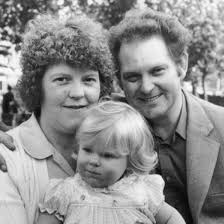
Do You Know How IVF Started? Updates From Our Annual Meeting
In October, two members of the NRM team, Dr Christine Murray and RN Stephanie Olmstead, attended the annual meeting of the American Society for Reproductive Medicine in San Antonio, TX. This annual 6-day conference of over 8000 attendees is always exciting; it is an opportunity to connect with some of the brightest minds from all over the world. Those attending include researchers, physicians, nurses, psychologists, lawyers and many others whose goal it is to expand the knowledge and reach of the field of reproductive endocrinology and infertility.
There are few other fields of medicine where the progression from science and discovery to new treatments occurs at such a rapid pace.
Dr Murray Writes of the Experience:
“While I was thrilled to be hearing updates and new discoveries in the field of fertility, I was most moved this year by a look back at the history of infertility treatment. One of the plenary sessions was a dialogue with some of the pioneers involved in the development of IVF. These doctors and embryologists shared amazing stories. The first in vitro fertilization (IVF) cycles were performed without the aid of ovarian stimulating medications (the injections we now commonly use). Patients had to be hospitalized-sometimes for days- to have LH hormone levels checked every 10 minutes. A rising LH level meant a quick transfer to the operating room for urgent surgery (!) to try to retrieve the one single egg before it ovulated. Embryologist Lucinda Veek Gosden spoke of setting up her first ‘laboratory’ in a tiny closet. In fact, the first embryo developed not in a small test tube but rather a big glass jar! I marvel at how far we have come in such a short time.

I had the honor of meeting Louise Brown in Texas at the meeting. As many already know, Louise was the world’s first IVF baby. She was born just outside of London on July 25, 1978. It is difficult to overstate the historical importance of this. Patrick Steptoe and Robert Edwards had been working toward this achievement for many years and millions of families have been the beneficiaries of their discipline and determination since then.
By 1978, Steptoe and Edwards were long accustomed to the glare of the spotlight. Reactions to their work had ranged from wonder and awe at the implications of this technology for so many ; to negative and even dangerous responses from those who considered this approach to be an unacceptable moral failure.
In Louise’s footsteps came the birth of Emily Carr-America’s first IVF baby-in 1980. She was conceived at the Jones Institute run by Howard and Georgeanna Jones. They were pioneers as well and a wonderful book called “In Vitro Fertilization Comes to America: Memoir of a Medical Breakthrough” tells of their tireless work in advancing the not only the science of IVF but it’s acceptance as well. They even had a private meeting with Pope John Paul II to advise him about the approach to IVF.
All of this history and these advances are remarkable, but meeting with Louise had a profound effect on me for a different reason: she reminded us of the incredible courage of her parents-Lesley and John Brown- a couple who simply wanted a family but were unable to do so because of her blocked fallopian tubes. Their desire for a child propelled them from their small town lives in the south of London to the big city. Every step was accompanied by intense media scrutiny-much of which was decidedly not friendly nor positive. Lesley endured painful tests and treatments, failure after failure, and never complained or gave up. The only time she ever refused a recommendation was when it was suggested she name her daughter Patricia or Roberta after the scientists who were responsible for her care in that first ‘test tube’. Louise it was!
Times have changed and thankfully, treatments have improved, but the courage and dignity that our patients demonstrate every day on their own journeys toward building a family makes me feel honored to be able to help them on that path.”

